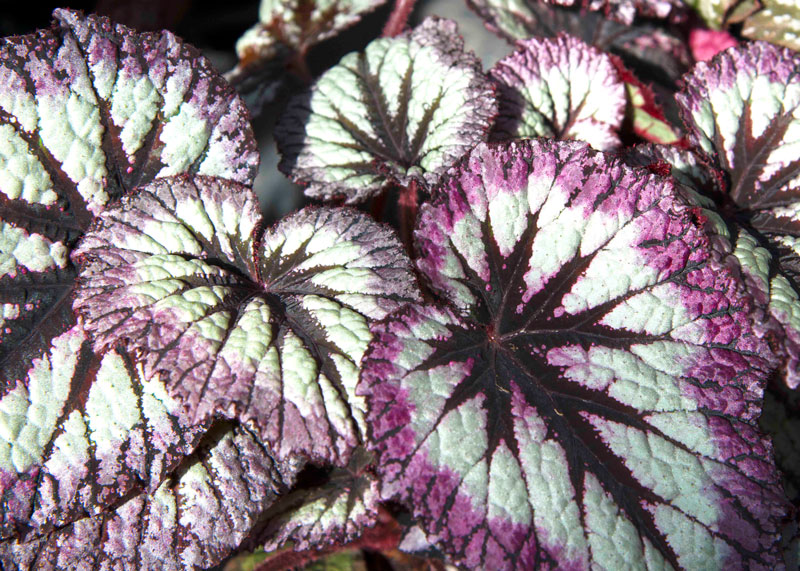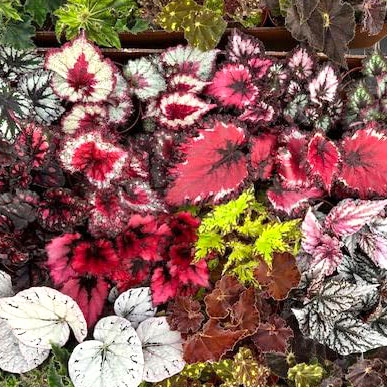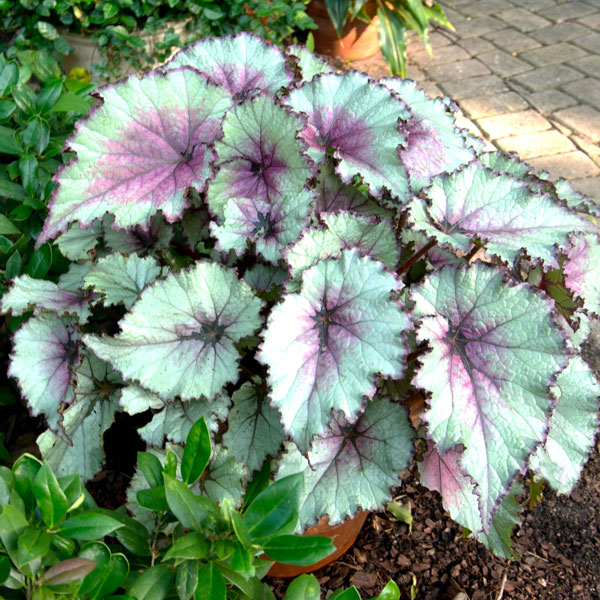King of the begonias

This is not the kind of plant you’d expect to come from the Himalayas. Then again, few of us has actually traveled there, so we probably didn’t know there are subtropical rainforests on the Himalayan slopes in northeastern India, China, and Vietnam.
That’s where these plants call home. However, that’s a bit of a stretch, because horticulturists have had their hands in breeding these beauties for a couple of centuries. What started out as the wild species Begonia rex has morphed into several thousands of rich tapestries in all shades of red, rose, pink, silver, green, and purple.

Unlike most other begonias, these plants are grown mainly for their foliage and not for their flowers. Their leaves range from 2 or 3 inches to 8 or 9 inches in diameter. Tip: types with the smaller leaves make more compact plants that generally hold up better over the long term.
Many Rex begonia varieties have metallic sheens to their coloring as well as spiral designs in their leaf forms. It was those exotic looks that made Rex begonias favored plants for Victorian parlor displays and again 100 years later as indoor gardening popularity surged in the second half of the 20th Century.

Nowadays you’re likely to come across a Rex begonia in a foliage plant collection in a flower shop or garden center. While they do have a reputation for being just a tiny bit temperamental, with a little basic knowledge you can do well with them.
What you’ll need to know…
• Scientific name: Begonia rex-cultorum
• Common name: Rex begonia hybrids
• Best uses: potted plant, hanging basket
• Light exposure (indoors year ‘round): bright window, but no direct sunlight
• Light exposure (outdoors during growing season): shade with no exposure to direct sunlight

• Temperature range: 60-80F. Does not do well below 55F. Some varieties withstand high temperatures better than others.
• Prefers high humidity. Put within a grouping of plants to hold moisture or on a pan of pebbles with water. Do not mist, however, as that could lead to leaf burn or leaf diseases.
• Soil preference: loose and highly organic. 2 parts sphagnum peat moss, 1 part commercial potting soil, 1 part perlite or vermiculite. Avoid heavy soils that compact over time.
• Type of pot: Either clay or plastic pots can work. You’ll need to adjust watering schedules somewhat depending on pot type. Do not “over-pot” Rex begonias. They do best if they’re slightly rootbound.
• Water needs: keep soil moist at all times, but never soggy for any extended period.
• Fertilizer: complete-and-balanced type of water-soluble food monthly during growing season. Cut back or discontinue in winter.
• Propagation: leaf cuttings. Cut healthy leaf from plant. Trim it with sharp shears to reduce its size (diameter), then insert it into a pot filled with 1 part peat moss and 1 part perlite. Use pencil to make hole to accept the stem before sticking into thoroughly wet rooting medium. Stick several more leaf cuttings, then cover with dry cleaner’s plastic to hold humidity around leaves. Leave small opening or poke one or two holes to let excess moisture exit. New plants should develop within 6 or 8 weeks.
